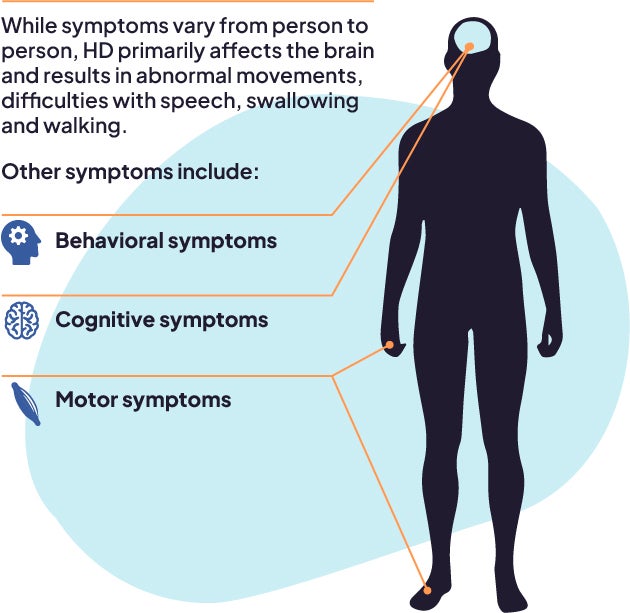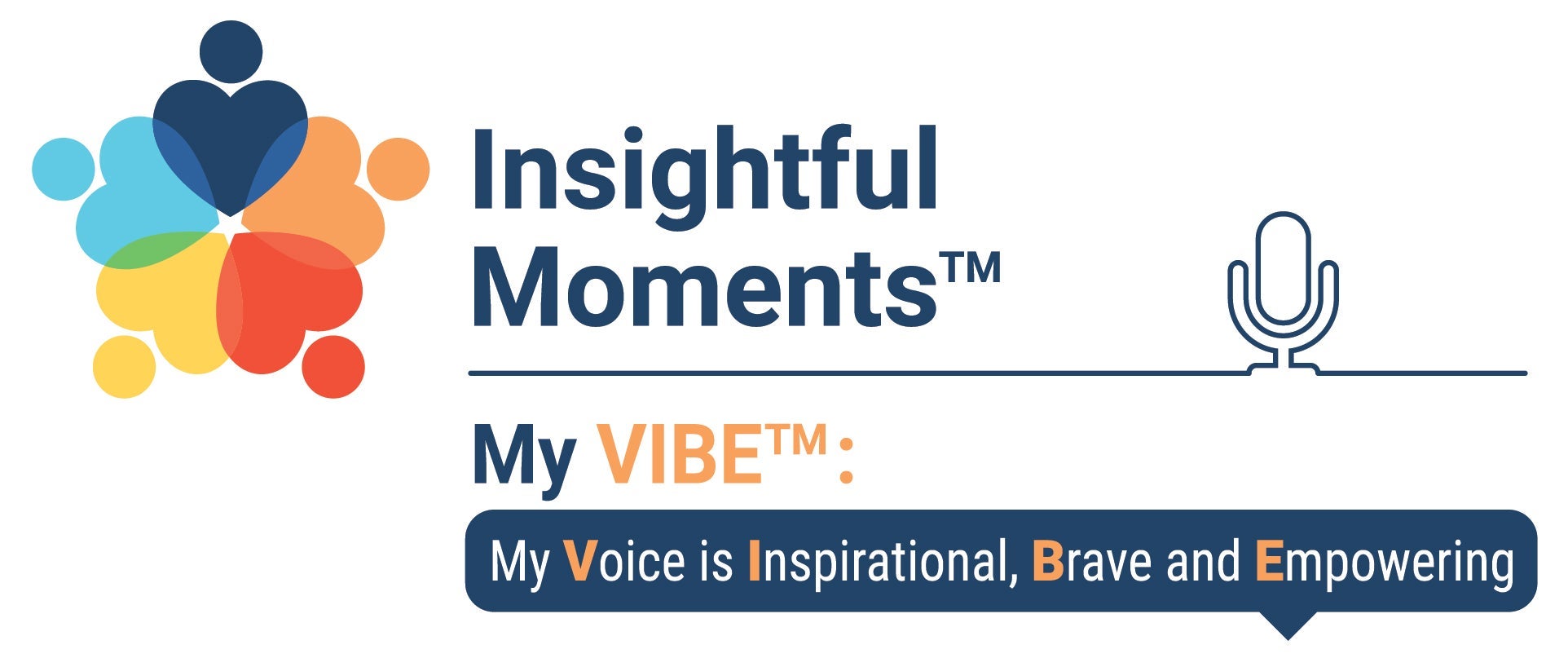Huntington's Disease (HD)
What is Huntington’s Disease?

Huntington’s disease is a rare, hereditary, genetic disorder of the central nervous system.1 It is caused by a defective gene. This gene produces a protein, called huntingtin, which is involved in the functioning of the nerve cells in the brain (neurons). When the gene is defective, it produces an abnormal (or mutated) huntingtin protein that is toxic and causes neuron damage and neuron death.2
Huntington’s disease usually presents in people who are in their 30s or 40s. Symptoms can present earlier in life, and this is called Juvenile Huntington’s disease.2,3 There are also cases of infantile Huntington’s disease, when symptoms develop in children who are younger than 10 years old.2
While symptoms vary from person to person, the disease primarily affects the brain and results in abnormal movements, difficulties with speech, swallowing and walking, as well as a number of other symptoms including:4,5
Behavioral symptoms: Frequently present in the early stage of Huntington’s disease, these symptoms include irritability, agitation, depression, euphoria, apathy, anxiety, delusions, and hallucinations.4,5,6
Cognitive symptoms: Usually develop gradually, at least 15 years before motor symptoms, and include poor attention, difficulty planning and thinking, memory loss, and dementia.7,8,9
Motor symptoms: Involuntary, unwanted movements that usually start in the extremities, such as the fingers and toes, before spreading to other muscles. This leads to difficulties standing and walking, clumsiness, rigidity, trouble holding objects, and speech and swallowing difficulties.4,5
How Common is Huntington’s Disease?
Men and women are equally likely to inherit the defective gene and develop Huntington’s disease.10 While Huntington’s disease affects approximately 135,000 globally, the prevalence varies greatly between countries.11,12,13 In North America, North-Western Europe, and Australia prevalence ranges from almost 6 cases per 100,000 people to almost 14 cases.14 Prevalence in Asia is much lower, at less than 1 case per 100,000 people.11

Is it Treatable?
While there are therapies approved for specific disease symptoms, currently, there is no cure for Huntington’s disease and there are no approved drugs that delay the onset or slow disease progression.
How is PTC Working to Treat Huntington’s Disease?
PTC is developing a potential treatment for Huntington’s disease, based on our splicing platform technology. PTC518, a small molecule that can be taken orally, reduces the production of the mutated huntingtin protein that leads to injury and death of the neuron, which results in disease progression.

Brian Beers Global Huntington’s disease Project Leader, PTCTo be involved in such a promising development program with many eyes across the world on us, motivates me and the team to work together and passionately to move this program forward.
Hear from patients and caregivers impacted by HD on our My VIBE podcast

Do you have questions?
Please reach out if you would like to speak with us.
[1] World Health Organization, 2020. 8A01.10 Huntington disease. Available at: https://icd.who.int/browse11/l-m/en#/http://id.who.int/icd/entity/2132180242 Accessed October 2021.
[2] Gatto EM, González Rojas N, Persi G, et al. Clin Parkinsonism Rel Disord 2020;3:100056.
[3] Tabrizi SJ, Flower MD, Ross CA, et al. Nat Rev Neurol 2020;16(10):529–546.
[4] Roos RAC. Orphanet J Rare Dis 2010;5:40.
[5] Kirkwood SC, Su JL, Conneally P, et al. Arch Neurol 2001;58(2):273–278.
[6] Paulsen JS , Ready RE, Hamilton JM, et al. J Neurol Neurosurg Psychiatry 2001;71:310–314.
[7] Paulsen JS. Curr Neurol Neurosci Rep 2011;11(5):474–483.
[8] Stout JC, Paulsen JS, Queller S, et al. Neuropsychology 2011;25(1):1–14.
[9] Papoutsi M, Labuschagne I, Tabrizi S, et al. Movement Disorders 2014;29(5):673–683.
[10] European Huntington’s Disease Network, 2016. About Huntington’s Disease. Available at: http://www.ehdn.org/about-hd/. Accessed October 2021.
[11] Fisher ER, Hayden MR. Multisource ascertainment of Huntington disease in Canada: prevalence and population at risk. Mov Disord. 2014;29(1):105-114.
[12] Overview of Huntington’s disease. (n.d.). Retrieved April 01, 2021, from https://hdsa.org/what-is-hd/overview-of-huntingtons-disease/#:~:text=Huntington’s%20disease%20(Huntington’s disease)%20is%20a,years%20and%20has%20no%20cure
[13] Rawlins MD, Wexler NS, Wexler AR, et al. Neuroepidemiology 2016;46:144–153.
[14] Baig SS, Strong M, Quarrell OW. Neurodegener Dis Manag 2016;6(4):331–343.